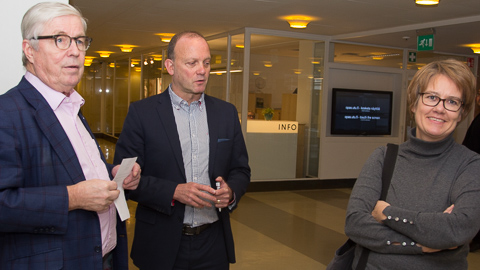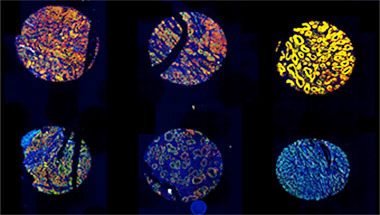New markers reflect tumor heterogeneity and guide therapy options
Biomarker assays reflecting tumor heterogeneity can reveal important information about the aggressiveness and possible metastasis of cancer. Furthermore, they can facilitate treatment decisions and make it easier to monitor patient’s response to treatment.

The professor of the University of Turku Kim Petterrsson (left), professor Guido Jenster from Erasmus Medical Center in The Netherland and post-graduate student Sami Blom from Institute for Molecular Medicine in the University of Helsinki have found new methods to examine and helpo prostate cancer patients.
This heterogeneity of prostate cancer presents formidable challenges to the physicians selecting the optimal treatment for each patient.

Prostate cancer, but in six different type.
Prostate cancer is the leading type of cancer in men and most common type of cancer in Finland. Every year approximately 4 700 men in Finland are diagnosed with the disease. Even though all of these patients share some common disease characteristics, there are no two identical tumors.
The national DIA-NET doctoral programme, Institute for Molecular Medicine Finland (FIMM), Division of Biotechnology at University of Turku and Indo-Finnish diagnostic research center (IFDRC) organized symposium concerning among others prostate cander. It presented new methods to analyse heterogeneity of prostate cancer in blood and tissue samples.
– We can also analyse urine and find out, if a person has a cancer or not, and even is it aggressive or not, professor Guido Jenster from Erasmus Medical Center in The Netherlands said.
New technologies measuring the heterogeneity of prostate cancer and their findings have the potential to allow doctors to choose more accurate and effective therapies for their patients in the future.
Professor Kim Pettersson from the University of Turku pointed out, thet it is important to know, is the cancer aggressive or not.
– If cancer is not aggressive and it does not grouw fast, in some cases it it better to leave it in peace and not operate, Petterson said.
In the symposim research-goup led from the University of Turku presented new techniques, which can also be applied to the diagnostics of other cancer types.
Text: Erja Hyytiäinen
Photo: Erja Hyytiäinen, Sami Blom